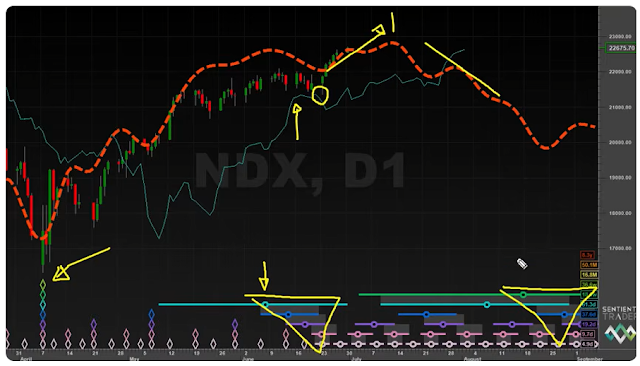Market analysts tend to attribute great significance to the price of copper as an important leading economic indicator: if demand for copper is rising, the economy is growing (and vice versa). For that reason, they pay close attention to what "Dr. Copper" is saying. But last week, Gold also made new all time highs at around $3,050/oz. Silver rallied quite strongly as well, but it's still trading well below its ATH price, which was just shy of $50/tr.oz. in April of 2011. Here is what the whole COMEX metals complex looks like:
COMEX Metals Complex (January 01, 2021 = 100)
There
has been an overall rising trend in the metals, building gradually from
late 2023. However, platinum barely moved thus far and palladium
actually dropped by more than half in the last four years. The rise in
Gold, Silver and Copper may be driven by inflation fears rather than
economic growth. Those three metals are investors' preferred inflation
hedges. Inflation hedging demand is likely what's behind the upward
pressure on prices.
Europe's great rearmament frenzy and the hundreds of billions of euros being allocated for it might end up adding more upward pressure to prices of industrial metals, as well as energy. In all, this will end up giving a strong boost to commodity price inflation in what could end up being a self-reinforcing cycle, triggering the next leg in the widely anticipated commodity supercycle.
US Commodity Price Index (1795 to Present)
with Major Inflation Peaks (Red Dots) & Major Inflation Troughs (Blue Dots).
Shown as 10 Year Rolling Compound Growth Rate with Polynomial Trend at Tops & Bottoms.
Long commodity cycles suggest that currency debasement and inflation may peak in the early 2040s. A commodity supercycle could reach its peak by 2045 (indicated by the last red dot), following a long cycle wave that spans approximately 55 years, with each cycle growing 5 years longer over the past 200 years. This pattern implies that the next peak will occur around 2045, 65 years after the peak in 1980.
None of this will happen overnight: the commodity supercycle is expected to span a period of 10 to 25 years, and it will be marked with many price rallies, followed by corrections and consolidations in that time. It should therefore be navigated with due caution and an iron discipline.





















%20conv%2020.png)



















.png)






